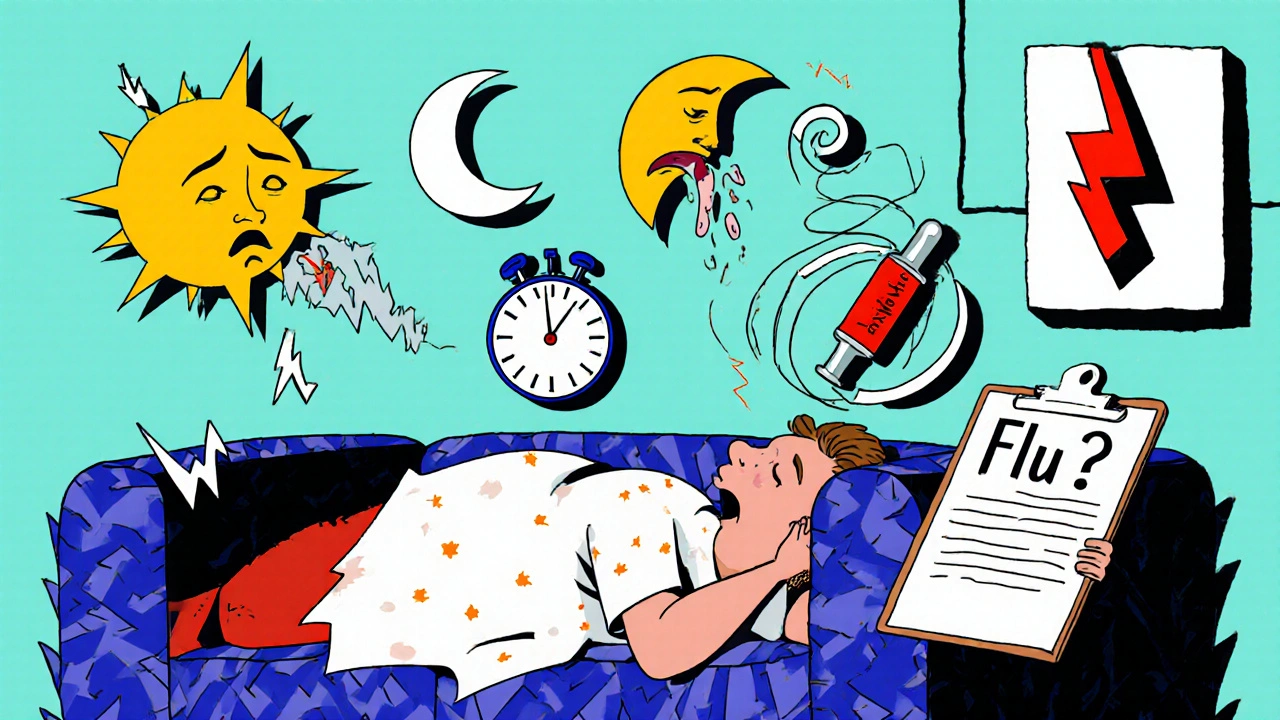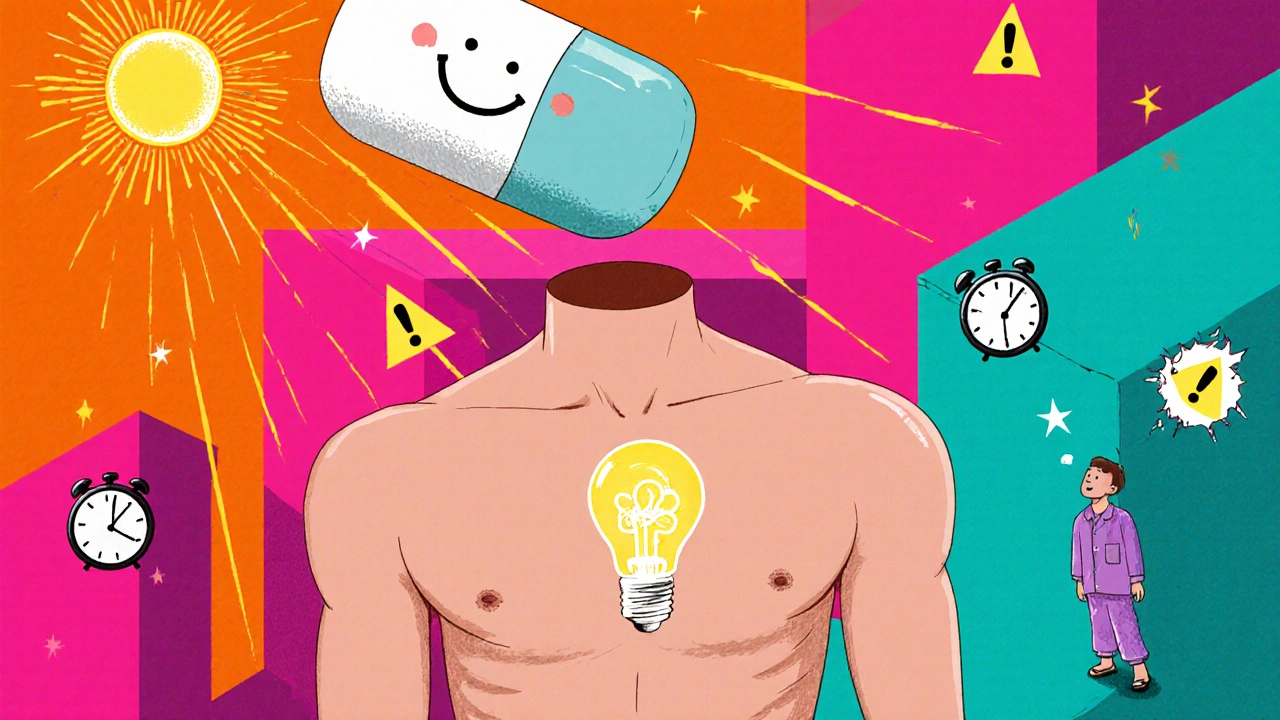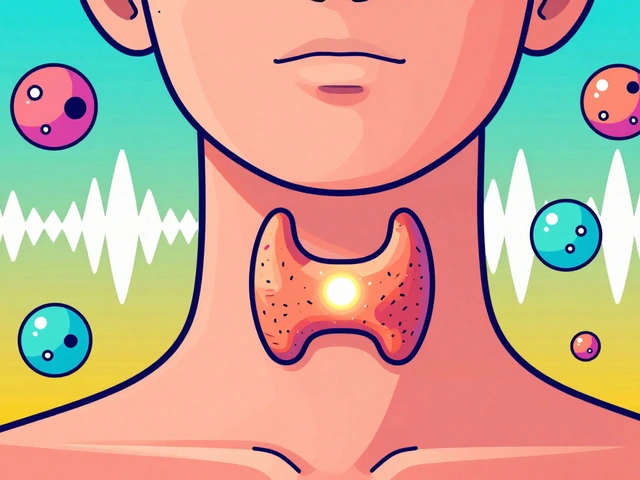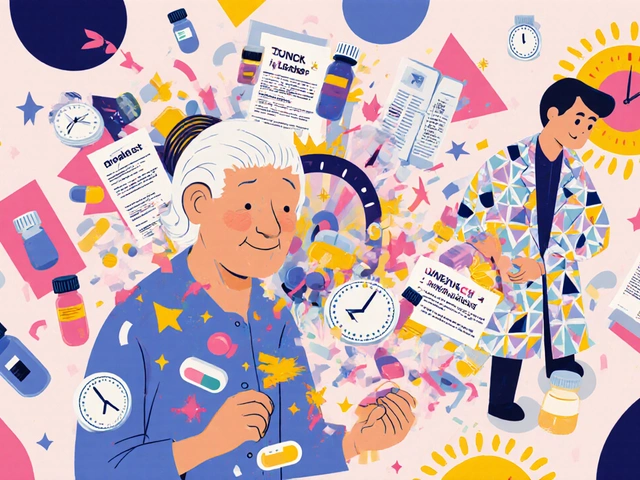Steroid Taper Calculator
Safely Taper Your Steroids
This calculator provides a safe, medically-accepted tapering schedule based on your current dose and treatment duration. Always follow your doctor's specific instructions.
Important: This is for informational purposes only. Never adjust your steroid dosage without consulting your healthcare provider. Adrenal insufficiency is a medical emergency that requires immediate attention.
Your Safe Tapering Schedule
| Step | Reduction Amount | Frequency | Expected Duration |
|---|
Total time to complete taper: 0 weeks
Stopping corticosteroids like prednisone suddenly can trigger a medical emergency most people don’t see coming. You might think if you’ve only taken steroids for a few weeks, you’re safe. But that’s not true. Even low doses, taken for less than four weeks, can shut down your body’s natural cortisol production. When you stop, your adrenal glands - already weakened from years of relying on pills - can’t snap back fast enough. The result? Adrenal insufficiency, a condition that can turn deadly within hours if ignored.
What Happens When You Stop Steroids Too Fast
Your body makes cortisol naturally to handle stress, regulate blood sugar, and control inflammation. When you take synthetic corticosteroids - even for something as common as asthma, rheumatoid arthritis, or a severe infection - your brain gets the message: "We don’t need to make our own." Over time, the hypothalamus and pituitary gland stop signaling the adrenal glands to produce cortisol. The glands shrink. They forget how to work.When you stop the medication abruptly, your body has no backup. Cortisol levels crash. Within 24 to 72 hours, symptoms start. Fatigue isn’t just "feeling tired." It’s being so exhausted you can’t get out of bed. Nausea turns into vomiting. Blood pressure drops so low you feel dizzy when you stand. Your muscles weaken. You lose your appetite and start losing weight. These aren’t signs of laziness or a virus. They’re signs your body is running out of fuel.
Left untreated, this becomes an adrenal crisis. You go into shock. Your skin turns pale or blue. You become confused, disoriented, or slip into a coma. About 6% of people who reach this stage die. That’s not rare. It’s preventable - if you know the signs.
Who’s at Risk - And Why Most People Don’t Realize It
You don’t have to be on high-dose steroids for years to be at risk. A 2023 study in Endocrine Abstracts found that even 5 mg of prednisone a day for just three weeks can suppress your adrenal axis. That’s a common prescription for allergies, skin rashes, or short-term flare-ups.Here’s the problem: doctors often don’t warn patients. Patients don’t connect their symptoms to stopping medication. A 2024 survey of 85 people who experienced adrenal insufficiency after stopping steroids found that 68% were told their symptoms were "post-viral fatigue," "anxiety," or "the flu." One woman in a case report was diagnosed with a urinary tract infection for six weeks - while her cortisol levels were plummeting. She ended up in the ER in shock.
Even people who think they’re careful can get caught. A 2023 JAMA study showed 47% of patients didn’t follow their tapering plan. Why? Side effects from the steroid itself - weight gain, mood swings, insomnia - made them want to quit fast. Others didn’t understand the risk. Some didn’t have access to clear instructions. Many didn’t know they needed to carry emergency medication.
Recognizing the Early Warning Signs
The first signs of adrenal insufficiency are subtle - but consistent. If you’ve recently stopped steroids and notice any of these, don’t wait:- Extreme fatigue that doesn’t improve with rest
- Loss of appetite and unexplained weight loss
- Nausea, vomiting, or stomach pain
- Muscle weakness or joint pain
- Dizziness or fainting when standing up
- Low blood pressure
- Mood changes: irritability, depression, brain fog
These symptoms don’t come and go. They get worse over days. If you’ve taken steroids for more than four weeks, and you’re experiencing two or more of these, assume it’s adrenal insufficiency until proven otherwise.
A key diagnostic clue: your morning cortisol level. If it’s below 5 μg/dL within 24 hours of your last dose, you’re at high risk. Levels above 10 μg/dL mean you’re likely safe. But most doctors don’t test this unless you’re already in crisis.

How to Safely Stop Steroids - The Right Way
There’s no one-size-fits-all taper. But there are proven guidelines:- For doses above 20 mg prednisone daily: Reduce by 2.5-5 mg every 3-7 days.
- For doses between 5-20 mg: Reduce by 1-2.5 mg every 1-2 weeks.
- For therapy longer than 6 months: Slow down even more - some need months to taper.
The American College of Physicians recommends a stepwise approach. If you were on high doses for years, your doctor may need to monitor your cortisol and ACTH levels before and during tapering. For most people, though, a slow, steady reduction works.
Don’t stop because you feel better. Don’t stop because you hate the side effects. Don’t stop because you think you’re "done." Your body needs time to wake up its own adrenal glands. Rushing this process is dangerous.
What to Do If You Suspect an Adrenal Crisis
If you’re vomiting, confused, collapsing, or have a fever with low blood pressure - this is an emergency. Call 911 or go to the ER immediately. Do not wait. Do not try to "power through."In the hospital, you’ll get a 100 mg IV bolus of hydrocortisone right away - followed by continuous infusion. Blood pressure usually improves within 30 to 60 minutes. Delayed treatment increases death risk.
But you don’t have to wait for the ER. If you’ve been on long-term steroids, you should have a prescription for emergency hydrocortisone injections. The NIDDK and Endocrine Society both recommend that patients on more than 5 mg prednisone daily for over four weeks carry this. Learn how to use it. Keep it with you. Tell family members where it is.
Living After Steroid Withdrawal
Recovery isn’t instant. Even after you’ve tapered off, your adrenal glands can take months to fully recover. Some people need low-dose cortisol replacement for over a year. Others never fully regain their pre-steroid function.That’s why education matters. A 2023 Mayo Clinic study found that patients given a written action plan - including symptoms to watch for, when to inject emergency cortisol, and who to call - had 79% better outcomes. They were less likely to end up in the hospital. They felt more in control.
Wear a medical alert bracelet. It says "Adrenal Insufficiency" and lists your emergency contact. It can save your life if you’re found unconscious.
Stress changes everything. If you get sick, injured, or have surgery, you need more cortisol. Your doctor should give you a "stress dose" plan - usually doubling or tripling your usual steroid dose until you recover. Don’t skip this. It’s not optional.
What’s Changing in 2025 - And What You Should Know
New tools are emerging. Point-of-care cortisol tests are in clinical trials - they can give results in 15 minutes. AI systems are now predicting who’s at risk by scanning electronic records for steroid use, lab trends, and symptoms. And research is identifying genetic markers that show who recovers slowly after stopping steroids.Regulations are catching up too. Since 2021, all systemic corticosteroid packages in the U.S. must include a warning about adrenal insufficiency. In Europe, 28 countries now issue patient alert cards. But awareness still lags.
Here’s the bottom line: If you’ve taken steroids for more than four weeks, you’re at risk. If you’ve stopped them recently and feel off - don’t ignore it. Adrenal insufficiency doesn’t come with a warning label you can see. It comes with fatigue, nausea, and dizziness - symptoms everyone mistakes for something else.
Know your risk. Know the signs. Carry your emergency shot. And never, ever stop steroids cold turkey without a plan.
Can adrenal insufficiency happen after just a few weeks of steroid use?
Yes. Even short-term use - as little as three to four weeks - can suppress your adrenal glands. Research from 2023 confirms that doses as low as 5 mg of prednisone per day can cause adrenal suppression. It’s not about how long you’ve been on steroids; it’s about whether your body has stopped making its own cortisol. Always assume risk if you’ve taken steroids for more than four weeks.
What’s the difference between adrenal insufficiency and steroid withdrawal syndrome?
Steroid withdrawal syndrome refers to non-specific symptoms like muscle aches, joint pain, fatigue, and mood swings that occur after stopping steroids - even without low cortisol levels. These are often mistaken for adrenal insufficiency. True adrenal insufficiency means your cortisol levels are dangerously low, leading to low blood pressure, vomiting, and shock. The key test is a morning serum cortisol level below 5 μg/dL. If it’s below that, it’s adrenal insufficiency - not just withdrawal.
Do I need to carry an emergency injection if I only took steroids for a month?
If you took more than 5 mg of prednisone daily for longer than four weeks, yes. The National Institute of Diabetes and Digestive and Kidney Diseases (NIDDK) recommends emergency hydrocortisone injections for anyone in this group. It’s not about how long you think you needed it - it’s about whether your body stopped making cortisol. Many people who end up in the ER had no idea they were at risk.
Can I just restart my steroid if I feel bad after stopping?
If you’re having symptoms like vomiting, dizziness, or confusion - yes, but only if you have an emergency injection. Do not try to restart your regular oral dose without medical advice. Oral steroids take hours to absorb. In adrenal crisis, you need fast-acting IV or injected hydrocortisone. Restarting your old dose without supervision can delay treatment and worsen your condition.
How long does it take for adrenal glands to recover after stopping steroids?
Recovery varies. For some, it takes weeks. For others, especially those on long-term therapy, it can take 6 to 12 months - or longer. Some never fully recover. There’s no way to predict exactly when your glands will wake up. That’s why you need to be cautious during stress (illness, surgery, injury) for at least a year after stopping. Your doctor may need to test your cortisol levels periodically to guide you.
Are there any tests to check if my adrenal glands are working again?
Yes. The most common test is the ACTH stimulation test. You get an injection of synthetic ACTH, and your cortisol levels are measured before and 30 minutes after. If your cortisol doesn’t rise enough, your adrenal glands aren’t responding. Blood tests for morning cortisol and ACTH levels are also used. These are typically done after you’ve been off steroids for at least 4-6 weeks, but your doctor will decide based on your history.






Heidi R
November 18, 2025 AT 19:38Ugh, another ‘medical horror story’ designed to scare people off meds. If you’re taking prednisone for more than four weeks, you’re already in the danger zone? That’s not medicine, that’s fearmongering. My rheumatoid arthritis doctor said three weeks is fine. I’m not carrying a syringe like I’m in a zombie apocalypse.
Brenda Kuter
November 18, 2025 AT 23:44THIS IS A COVER-UP. The pharmaceutical companies KNOW this. They don’t want you to know your body can heal itself. Cortisol is NATURAL. Pills are CONTROL. I stopped cold turkey after 6 weeks and went into shock - and guess what? The ER doctor said ‘oh, you should’ve tapered’ like it was my fault. But the real reason? They make BILLIONS off adrenal crisis meds. Wake up. 🚨
Shaun Barratt
November 20, 2025 AT 15:38The clinical data presented here is largely accurate and aligns with current endocrine guidelines from the American College of Physicians and Endocrine Society. However, the tone risks inducing unnecessary panic among patients who have been prescribed short-term corticosteroids for acute conditions. The 2023 Endocrine Abstracts study cited correctly identifies suppression thresholds, but the risk-benefit analysis must be contextualized. For example, a 5mg x 3-week course for acute allergic reaction carries a negligible risk of adrenal crisis in otherwise healthy individuals. The emphasis on emergency injections should be reserved for those on prolonged therapy (>6 months) or with comorbidities. Clarity, not alarmism, is the standard of care.
Iska Ede
November 22, 2025 AT 14:12Oh wow, so now we’re all supposed to be terrified of every little steroid prescription? Like, congrats, you turned a common medical tool into a death sentence. I took prednisone for a bad rash, felt fine, stopped it, and went on with my life. You’re basically telling me I should be carrying a syringe like it’s a vape pen. 😂
Gabriella Jayne Bosticco
November 23, 2025 AT 14:56I was on 10mg for 8 weeks for a flare-up and tapered slowly - it took me 4 months. I didn’t know how bad it could be until I almost passed out one morning. This post is a lifeline. If you’ve ever taken steroids, even for a week, talk to your doctor about a taper. Don’t wait until you’re in the ER. And yes, get that emergency shot. It’s not dramatic - it’s practical. You wouldn’t drive without a seatbelt. This is the same thing.
Sarah Frey
November 23, 2025 AT 18:29This is an exceptionally well-researched and clinically grounded summary. The distinction between steroid withdrawal syndrome and true adrenal insufficiency is critical and often misunderstood by both patients and providers. I particularly appreciate the emphasis on the morning cortisol threshold of 5 μg/dL as a diagnostic anchor. For clinicians, this should be mandatory reading when prescribing systemic corticosteroids. For patients, it is a vital empowerment tool. The recommendation for emergency hydrocortisone in those with >4 weeks of exposure is evidence-based and should be standard practice.
Katelyn Sykes
November 25, 2025 AT 17:10Gabe Solack
November 26, 2025 AT 10:03Big respect to the author for putting this out. I was on 20mg for 10 weeks and tapered over 3 months. My doctor never mentioned the emergency shot until I asked. I got one. I keep it in my glovebox. My wife knows how to use it. I’m not scared - I’m prepared. 🩺💉 This isn’t fear. It’s responsibility. If you’ve taken steroids longer than a month - get the shot. It’s like having an EpiPen. You hope you never need it. But you’re glad it’s there.
Yash Nair
November 27, 2025 AT 00:21Bailey Sheppard
November 27, 2025 AT 13:32Thank you for writing this. I’ve had friends who thought they were just tired after stopping steroids - turns out they were in early adrenal crisis. I wish I’d known this sooner. It’s not about scaring people, it’s about giving them power. If you’ve been on steroids for more than four weeks, talk to your doctor. Ask about cortisol testing. Ask about the emergency injection. You’re not being paranoid - you’re being smart. And if you’ve already stopped? Pay attention to your body. Fatigue isn’t just fatigue. It might be your adrenals screaming for help.
Girish Pai
November 29, 2025 AT 10:26Per the 2023 Endocrine Society guidelines, the hypothalamic-pituitary-adrenal (HPA) axis suppression is dose- and duration-dependent, with even low-dose, short-term exposure demonstrating measurable suppression in 30–40% of cases per ACTH stimulation testing. The clinical imperative is not merely prophylactic education but systematic integration into EHR alerts and discharge protocols. Furthermore, the NIDDK’s 2024 update mandates that all prescriptions exceeding 5 mg prednisone daily for >28 days trigger a mandatory patient counseling module - a policy gap in 78% of U.S. outpatient clinics. We must move beyond anecdotal awareness into standardized, algorithm-driven risk mitigation.